#giant blue cohosh
Photo

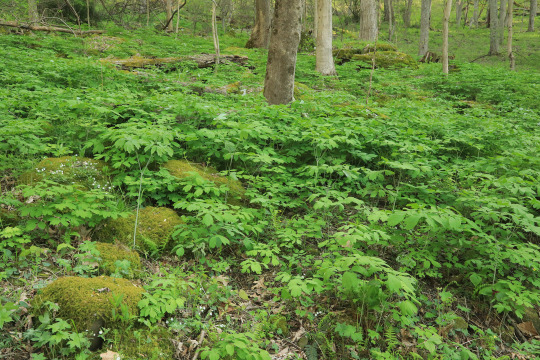
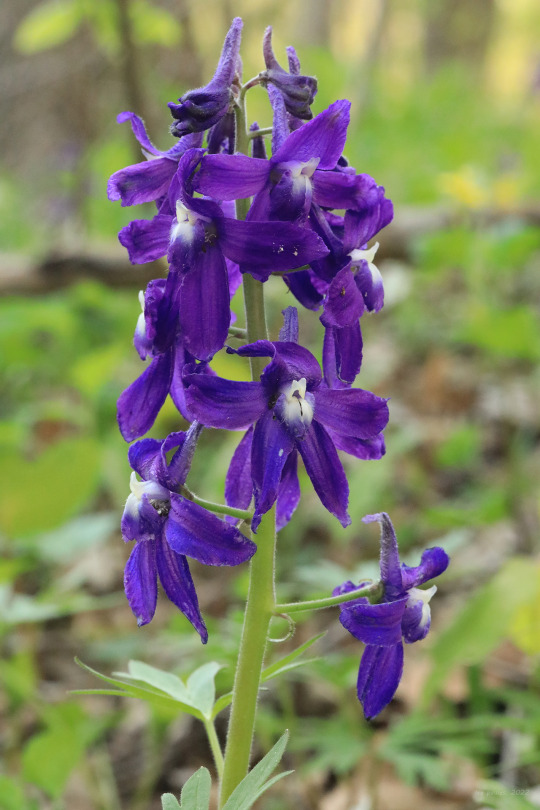
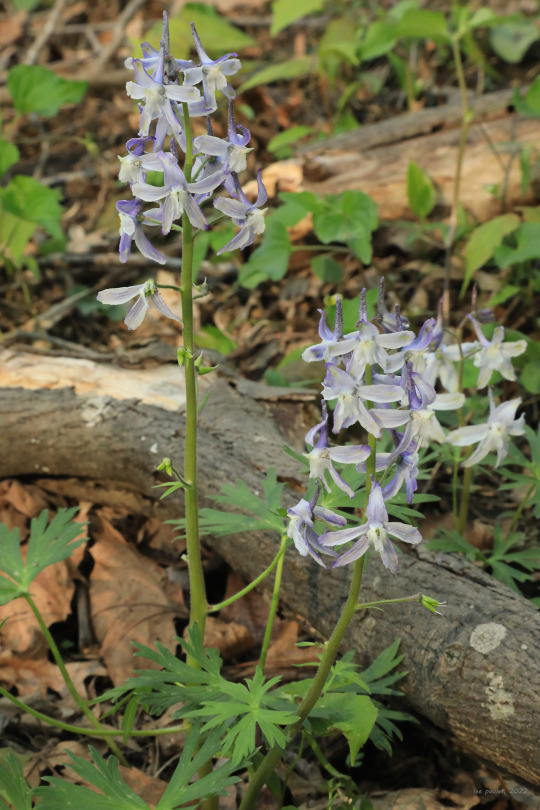
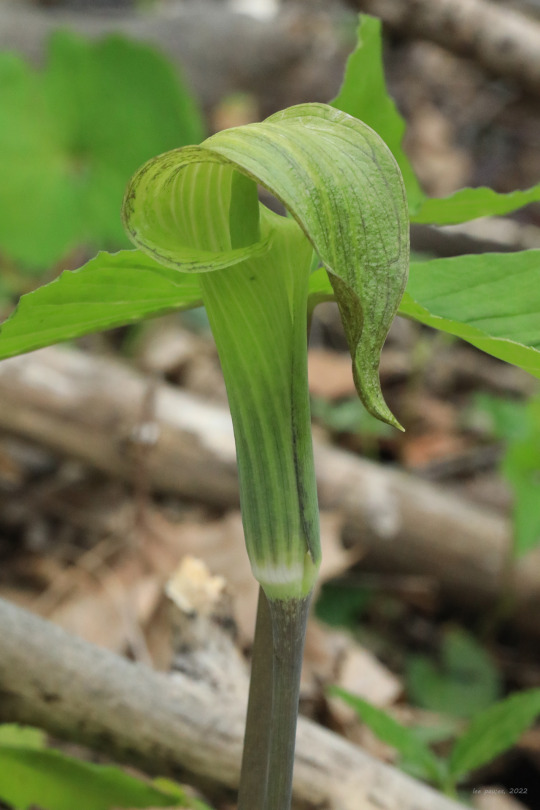

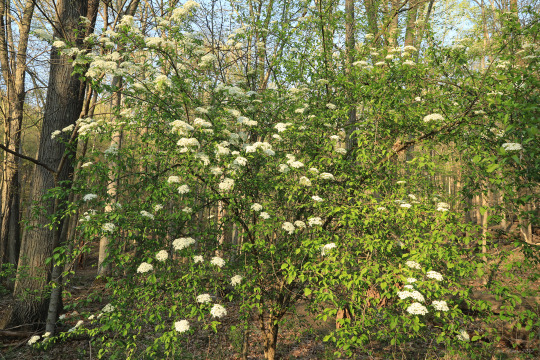
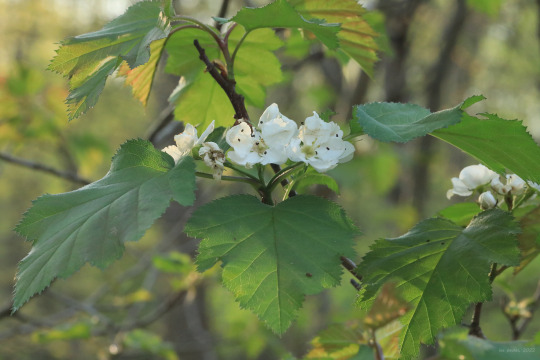
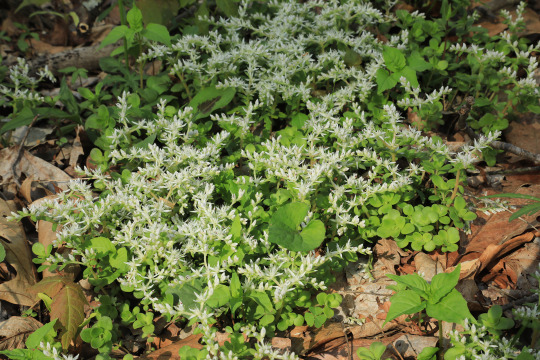
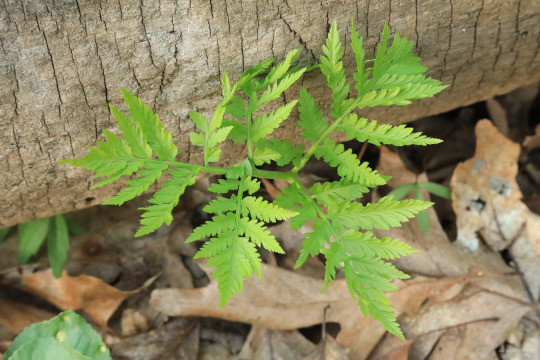
Elizabeth’s Woods, part of the Toms Run Preserve system, is located just a few minutes from where I work: a convenient little Eden on whose gentle, winding trails I frequently relieve my accumulated angst and stress. In early spring, especially in the late afternoon, the old woods take on a soft, burnished glow that penetrates every leaf and flower, exposing nature’s finest filigree - veins, venules, stigmas, anthers and more - in intricate detail.
From top: a rocky alcove overrun by giant blue cohosh (Caulophyllum giganteum); a purple variation of dwarf larkspur (Delphinium tricorne), a toxic little beauty whose flowers remind me of parachuting wizards; an even lovelier lavender and white variation of the same plant; a tall and stately Jack-in-the pulpit (Arisaema triphyllum); a smooth blackhaw viburnum (Viburnum prunifolium), equally beautiful in spring and fall, when its foliage turns reddish-purple; bigfruit hawthorn (Crataegus macrosperma) with new spring blossoms; woodland stonecrop (Sedum ternatum), whose massed white flowers look like clumps of snow in the leaf litter; and an unfurling Virginia grape fern (Botrypus virginianus), also known as rattlesnake fern due to its tendency to grow in the same habitats in which rattlesnakes occur.
#appalachia#vandalia#west virginia#spring#flora#wildflowers#caulophyllum giganteum#giant blue cohosh#delphinium tricorne#dwarf larkspur#arisaema triphyllum#jack-in-the-pulpit#viburnum prunifolium#blackhaw viburnum#smooth blackhaw viburnum#crataegus macrosperma#bigfruit hawthorn#sedum ternatum#woodland stonecrop#botrypus virginianus#virginia grape fern#rattlesnake fern#elizabeth's woods#toms run preserve#west virginia land trust
145 notes
·
View notes
Text
Native Plants I’ve Actually Seen Growing Wild in Southern Ontario
Acer saccharinum (silver maple) --along the sides of highways
Acer saccharum (sugar maple) --GTA ravines
Achillea millefolia (yarrow) --GTA ravines
Allium schoenoprasum (wild chives) --GTA ravines, Ridgetown
Allium tricoccum (ramps) --Niagara region escarpments
Amaranthus retroflexus (redroot amaranth) --fallow areas in the GTA
Ambrosia artemisiifolia (ragweed) --fallow areas in the GTA
Ambrosia trifida (giant ragweed) --parks in the GTA
Amelanchier spp. (saskatoon/serviceberry) --GTA ravines
Arisaema triphyllum (Jack-in-the-pulpit) --GTA ravines
Aronia melanocarpa (black chokeberry) --ravines and parks in the GTA
Asarum canadense (Canada ginger) --GTA ravines
Asclepias syriaca (common milkweed) --fallow areas, ravines, and parks throughout southern Ontario from Windsor to GTA
Asplenium trichomanes (maidenhair spleenwort) --Niagara region escarpments
Betula spp. (birch) --ravines and parks throughout southern Ontario from Windsor to GTA
Bidens spp. (beggar ticks) --GTA ravines
Caulophyllum thalictroides (blue cohosh) --GTA parks
Ceratophyllum demersum (hornwort) --GTA ravines (native in freshwater across the globe anyway)
Circaea lutetiana (enchanter’s nightshade) --fallow areas in the GTA
Commelina spp. (dayflower) --fallow areas in Windsor
Cornus alternifolia (Pagoda dogwood) --GTA wooded areas
Cornus sericea (red osier dogwood) --GTA ravines and in Windsor riverside parks
Crataegus spp. (hawthorn) --GTA ravines and parks
Echinocystis lobata (wild prickly cucumber) --GTA ravines
Elaeagnus commutata (silverberry) --GTA parks and fallow areas
Epilobium ciliatum (fringed willowherb) --fallow areas in the GTA
Equisetum spp. (horsetail/scouring rush) --GTA ravines and fallow areas
Erigeron spp. (fleabane) --GTA parks and fallow areas, Ridgetown
Erythronium americanum (trout lily) --GTA ravines and parks
Eutrochium maculatum (Joe-Pye weed) --GTA parks
Fragaria virginiana (wild strawberry) --fallow areas in the GTA
Geranium maculatum (wild geranium) --Windsor green spaces
Geranium robertianum (herb robert) --Windsor green spaces
Geum aleppicum (yellow avens) --GTA fallow areas
Geum canadense (white avens) --GTA fallow areas
Geum macrophyllum (large-leaved avens) --GTA fallow areas
Gymnocladus dioicus (Kentucky coffee tree) --GTA ravines
Helianthus spp. (sunflower) --GTA fallow areas and parks
Heracleum maximum (cow parsnip) --GTA ravines
Hordeum jubatum (foxtail barley) --GTA fallow areas
Humulus lupulus (hops) --GTA ravines
Hydrophyllum virginianum (Virginia waterleaf) --GTA ravines
Impatiens capensis (jewelweed) --GTA ravines and in Windsor riverside parks
Juglans nigra (black walnut) --GTA ravines
Lactuca canadensis (Canadian lettuce) --GTA fallow areas
Lilium michiganense (Michigan lily) --GTA ravines
Lupinus perennis (sundial lupine) --GTA parks
Maianthemum canadense (Canada mayflower) --GTA ravines
Maianthemum racemosum (starry false solomon’s seal) --GTA ravines and parks
Maianthemum stellatum (starry false solomon’s seal) --GTA ravines
Matteuccia struthiopteris (ostrich fern) --GTA ravines
Monarda fistulosa (wild bergamot) --GTA ravines and parks
Morus rubra (red mulberry) --fallow areas in Windsor, GTA parks
Myosotis laxa (smallflower forget-me-not) --GTA fallow areas
Oenothera biennis (evening primrose) --GTA fallow areas
Onoclea sensibilis (sensitive fern) --GTA ravines
Oxalis stricta (yellow wood sorrel) --fallow areas and ravines throughout southern Ontario from Windsor to GTA
Parietaria pensylvanica (Pennsylvania pellitory) --GTA fallow areas
Parthenocissus quinquefolia (Virginia creeper) --Windsor fallow areas and GTA ravines and parks
Persicaria lapathifolia (curlytop smartweed) --GTA fallow areas
Podophyllum peltatum (mayapple) --GTA ravines and parks
Portulaca oleracea (purslane) --fallow areas throughout southern Ontario from Windsor to GTA (native globally anyway)
Potentilla norvejica monspeliensis (ternate-leaved cinquefoil) --GTA fallow areas
Prunella vulgaris (selfheal) --fallow areas and ravines throughout southern Ontario from Windsor to GTA
Prunus virginiana (chokecherry) --Windsor fallow areas, GTA ravines and parks, Niagara region escarpments
Pteridium aquilinum latiusculum (western bracken fern) --GTA parks
Quercus spp. (oak) --wooded areas throughout southern Ontario from Windsor to GTA
Rhus typhina (staghorn sumac) --parks and fallow areas throughout southern Ontario from Windsor to Collingwood
Ribes spp. (currants) --GTA ravines and parks
Ribes spp. (gooseberries) --GTA ravines
Robinia pseudoacacia (black locust) --GTA ravines and parks
Rosa spp. (roses) --GTA ravines, parks, and fallow areas
Rubus occidentalis (black raspberry) --ravines, parks, and fallow areas in Hamilton and GTA
Rubus odoratus (purple-flowered raspberry) --GTA ravines and parks
Rubus strigosus (American red raspberry) --GTA parks
Rudbeckia hirta (black-eyed susan) --GTA parks
Salix spp. (willow) --GTA ravines
Sambucus canadensis (common elderberry) --Windsor riverside parks, GTA ravines
Sambucus racemosa (red elderberry) --GTA ravines and parks
Smilax spp. (greenbrier) --GTA parks
Solidago canadensis (Canada goldenrod) --parks and fallow areas throughout southern Ontario from Windsor to GTA
Sorbus spp. (mountain ash) --GTA ravines and parks
Streptopus spp. (twistedstalk) --GTA parks
Symphoricarpos spp. (snowberry) --GTA parks
Symphyotrichum ericoides (heath aster) --fallow areas throughout southern Ontario from Windsor to GTA
Symphyotrichum novae-angliae (New England aster) --fallow areas throughout southern Ontario from Windsor to GTA
Symplocarpus foetidus (skunk cabbage) --GTA parks
Tilia spp. (linden) --GTA ravines
Trillium grandiflorum (white trillium) --parks throughout southern Ontario from Windsor to GTA
Tsuga canadensis (eastern hemlock) --GTA parks
Typha latifolia (broad-leaved cattail) --marshes in Essex county and GTA
Urtica gracilis (slender nettle) --GTA ravines
Uvularia spp. (bellwort) --streams in Windsor green spaces
Verbena hastata (blue vervain) --GTA ravines
Viburnum lentago (nannyberry) --GTA parks and Ridgetown ravine
Viburnum trilobum (highbush cranberry) --Ridgetown
Viola sororia (wood violet) --fallow areas and wooded areas throughout southern Ontario from Windsor to GTA
Vitis riparia (riverbank grape) --GTA fallow areas, ravines, and parks
Waldsteinia fragarioides (barren strawberry) --GTA ravines and parks
Xanthium strumarium canadense (Canada cocklebur) --GTA parks and fallow areas
I’ve likely seen many others and just couldn’t identify them, but there are a lot I’ve never seen growing wild. What I’m hoping is that some of the native species I have in my garden will make their way to the nearby ravine. If I get around to it, though, I might just take a walk with some Asclepias incarnata (swamp milkweed) seeds in the fall. They certainly seem to successfully germinate in my garden whether I want them to or not (don’t have space for them to go crazy). Can’t see why they wouldn’t in a natural swamp area.
#text post#long text post#native plants of Ontario#native plants of North America#wild native plants
10 notes
·
View notes
Text
Spell Chart
🕷Astral Projection
Color - Yellow, Blue
Herb - Dittany of Crete, Mugwort, Poplar
Stone - Quartz Crystal
🕷Banishing
Color - Black
Herb - Basil, Yarrow
Stone - Salt
🕷Beauty
Color - White
Herb - Avocado, Catnip, Flax, Ginseng, Maidenhair, Yerba Santa
Stone - Herkimer Diamond, Jasper, Tiger's Eye
🕷Business Success
Color - Green, Violet
Herb - Benzoin, Bladderwrack, Dock, Vertivert
Stone - Bloodstone
🕷Centering
Color - Yellow
Herb - Vervain
Stone - Calcite, Herkimer Diamond
🕷Chastity
Color - White
Herb - Cactus, Camphor, Coconut, Cucumber, Fleabane, Hawthorne, Lavender, Pineapple, Sweet pea, Vervain, Witch Hazel
Stone - Jasper
🕷Childbirth
Color - Blue, Red
Herb - Corn
Stone - Geodes
🕷Courage
Color - Red
Herb - Borage, Black Cohosh, Columbine, Masterwort, Mullein, Poke, Ragweed, Sweet pea, Tea, Thyme, Tonka, Wahoo, Yarrow
Stone - Amethyst, Bloodstone, Herkimer Diamond, Tiger's Eye
🕷Dead
Color - Black
Herb - Yew
Stone - Fossils
🕷Dieting
Color - White
Herb - Basil
Stone - Moonstone,
🕷Divination
Color - Yellow
Herb - Broom, Camphor, Cherry, Dandelion, Fig, Goldenrod, Ground Ivy, Hibiscus, Meadowsweet, Orange, Orris, Pomegranate
Stone - Hematite, Moonstone, Tiger's Eye
🕷Dreams
Color - Yellow
Herb - Mistletoe
Stone - Amethyst
🕷Employment
Color - Green
Herb - Devil's Shoestring, Lucky Hand, Pecan
Stone - Tiger's Eye
🕷Exorcism
Color - Black
Herb - Angelica, Arbutus, Asafetida, Avens, Basil, Beans, Birch, Boneset, Buckthorn, Clove, Clover, Cumin, Devil's Bit, Dragon's Blood, Elder, Fern, Fleabane, Frankincense, Fumitory, Garlic, Heliotrope, Horehound, Horseradish, Juniper, Leek, Lilac, Mallow, Mint, Mistletoe, Mullein, Myrrh, Nettle, Onion, Peach, Peony, Pepper Pine, Rosemary, Rue, Sagebrush, Sandalwood, Sloe, Snapdragon, Tamarisk, Thistle, Witch Grass, Yarrow
Stone - Bloodstone, Jasper
🕷Fertility
Color - Green
Herb - Agaric, Banana, Bistort, Bodhi, Carrot, Cuckoo-Flower, Cucumber, Cyclamen, Daffodil, Dock, Fig, Geranium, Grape, Hawthorn, Hazel, Horsetail, Mandrake, Mistletoe, Mustard, Myrtle, Nuts, Oak, Olive, Date Palm, Patchouli, Peach, Pine, Pomegranate, Poppy, Rice, Sunflower, Wheat
Stone - Geodes
🕷Fidelity
Color - Pink
Herb - Chickweed, Chili Pepper, Clover, Cumin, Elder, Licorice, Magnolia, Nutmeg, Rhubarb, Rye, Scullup, Spikenard, Giant Vetch, Yerba Mate
Stone - Amethyst, Herkimer Diamonds
🕷Friendship
Color - Pink
Herb - Lemon, Love Seed, Passion Flower, Sweet pea
Stone - Aventurine
🕷Gambling
Color - Green
Herb - Angelica, Chamomile, Devil's Shoestring
Stone - Aventurine, Tigers Eye
🕷Gardening
Color - Green
Herb - Apples
Stone - Herkimer Diamond, Jasper
🕷Grounding
Color - Yellow
Herb - Vervain
Stone - Hematite, Moonstone, Salt,
🕷Happiness
Color - Blue, Pink
Herb - Catnip, Celandine, Cyclamen, Hawthorn, High John the Conqueror, Hyacinth, Lavender, Lily of the Valley, Marjoram, Meadowsweet, Morning Glory, Purslane, Quince, Saffron, St. John's Wort, Witch Grass
Stone - Amethyst, Aventurine, Herkimer Diamond
🕷Healing/Health
Color - Green, Violet, Brown, Blue
Herb - Adder's Tongue, Allspice, Amaranth, Angelica, Balm of Lemon, Balm of Gilead, Barley, Bay, Bittersweet, Blackberry, Bracken, Burdock, Calamus, Carnation, Cedar, Cinnamon, Citron, Cowslip, Cucumber, Dock, Elder, Eucalyptus, Fennel, Figwort, Flax, Gardenia, Garlic, Ginseng, Goat's Rue, Golden Seal, Groundsel, Heliotrope, Hemp, Henna, Hops, Horehound, Horse Chestnut, Ivy, Job's Tears, Life Everlasting, Lime, Mesquite, Mint, Mugwort, Myrrh, Nettle, Oak, Olive, Onion, Peppermint, Pepper Tree, Persimmon, Pine, Plantain, Potato, Rose, Rosemary, Rowan, Rue, Saffron, Sandalwood, Spearmint, Thistle, Thyme, Ti, Tobacco, Vervain, Violet, Wild Plum, Willow, Wintergreen, Wood Sorrel, Yerba Santa
Stone - Amethyst, Aventurine, Bloodstone, Calcite, carnelian, Quartz Crystal, Hematite, Herkimer Diamond, Jasper, Tiger's Eye
🕷Invisibility
Color - White
Herb - Amaranth, Chicory, Edelweiss, fern, Heliotrope, mistletoe, poppy, Wolf's Bane
Stone - Bloodstone, Tigers Eye
🕷Legal Matters
Color - Green, Brown
Herb - Buckthorn, Cascara Sagrada, Celandine, Hickory marigold, Skunk Cabbage
Stone - Amethyst, Bloodstone
🕷Longevity Color - Green
Herb - Cypress, Lavender, Lemon, Life-Everlasting, Maple, Peach, Sage, Tansy
Stone - Fossils, Jasper
🕷Love
Color - Red, Pink
Herb - Adam and Eve, Aloe, Apple, Apricot, Aster, Avens, Avocado, Bachelor's Buttons, Balm of Lemon, Balm of Gilead, Barley, Basil, Beans, Bedstraw, Beet, Betony, Bleeding Heart, Bloodroot, Brazil Nut, Caper, Cardamom, Catnip, Chamomile, Cherry, Chestnut, Chickweed, Chili Pepper, Cinnamon, Clove, Clover, Cohosh, Coltsfoot, Columbine, Copal, Coriander, Crocus, Cubeb, Cuckoo-Flower, Daffodil, Daisy, Damiana, Devil's Bit, Dill, Dogbane, Dragon's Blood, Dutchman's Breeches, Elecampane, Elm, Endive, Eryngo, Fig, Fuzzy Weed, Gardenia, Gentian, Geranium, Ginger, Ginseng, Grains of Paradise, Hemp, Hibiscus, High John the Conqueror, Houseleek, Hyacinth, Indian Paint Brush, Jasmine, Joe-Pye Weed, Juniper, Kava-Kava, Lad's Mantle, Lavender, Leek, Lemon, Lemon Verbena, Licorice, Lime, Linden, Liverwort, Lobelia, Lotus, Lovage, Love Seed, Maidenhair, Male Fern, Mallow, Mandrake, Maple, Marjoram, Mastic, Meadow Rue, Meadowsweet, Mimosa, Mistletoe, Moonwort, Myrtle, Nuts, Oleander, Orange, Orchid, Pansy, Papaya, Pea, Peach, Pear, Peppermint, Periwinkle, Pimento, Plum, Plumeria, Poppy, Prickly Ash, Primrose, Purslane, Quassia, Quince, Raspberry, Rose, Rosemary, Rue, Rye, Saffron, Sarsaparilla, Skullcap, Senna, Snakeroot, Southernwood, Spearmint, Spiderwort, Strawberry, Sugar Cane, Sumbul, Tamarind, Thyme, Tomato, Tonka, Tormentil, Trillium, Tulip, Valerian, Vanilla, Venus Flytrap, Vervain, Vertivert, Violet, Willow, Witch grass, Wormwood, Yarrow, Yerba Mate, Yohimbe
Stone - Amethyst, Calcite, Jasper, Lepidolite, Moonstone
🕷Luck
Color - Green, Orange
Herb - Allspice, Aloe, Bamboo, Banyan, Be-Still, Bluebell, Cabbage, Calamus, China Berry, Cinchona, Cotton, Daffodil, Devil's Bit, Fern, Grains of Paradise, Hazel, Heather, Holly, Houseleek, Huckleberry, Irish Moss, Job's Tears, Linden, Lucky Hand, Male Fern, Moss, Nutmeg, Oak, Orange, Persimmon, Pineapple, Pomegranate, Poppy, Purslane, Rose, Snakeroot, Star Anise, Straw, Strawberry, Sumbul, Vertivert, Violet, Wood Rose
Stone - Aventurine, Lepidolite, Tiger's Eye
🕷Magickal Power
Color - Violet
Herb - Cinnamon, Club Moss
Stone - Bloodstone, Crystal Quartz
🕷Meditation
Color - Blue
Herb - Bodhi, Gotu Kola
Stone - Amethyst, Geodes
🕷Mental Powers Color - Yellow
Herb - Caraway, Celery, Eyebright, Grape, Horehound, Lily of the Valley
Stone - Aventurine, Herkimer Diamond
🕷Money, Wealth, Prosperity, Riches
Color - Green
Herb - Alfalfa, Allspice, Almond, Basil, Bergamot, Blackberry, Bladderwrack, Blue Flag, Bryony, Bromeliad, Buckwheat, Calamus, Camellia, Cascara Sagrada, Cashew, Cedar, Chamomile, Cinnamon, Cinquefoil, Clove, Clover, Comfrey, Cowslip, Dill, Dock, Elder, Fenugreek, Fern, Flax, Fumitory, Galangal, Ginger, Goldenrod, Golden Seal, Gorse, Grapes of Paradise, Grape, Heliotrope, High John the Conqueror, Honesty, Honeysuckle, Horse Chestnut, Irish Moss, Jasmine, Lucky Hand, Mandrake, Maple, Marjoram, May Apple, Mint, Moonwort, Moss, Myrtle, Nutmeg, Oak, Oats, Onion, Orange, Oregon Grape, Patchouli, Pea, Periwinkle, Pine, Pineapple, Pipsissewa, Pomegranate, Poplar, Poppy, Rattlesnake Root, Rice, Snapdragon, Sassafras, Seamae, Snakeroot, Squill, Tea, Tonka, Trillium, Vervain
Stone - Amethyst, Aventurine, Bloodstone, Calcite, Herkimer Diamond, Jasper, Salt, Tiger's Eye
🕷Nightmares, Banishing
Color - Black
Herb - Betony, Cedar
Stone - Lepidolite
🕷Peace
Color - White
Herb - Dulse, Eryngo, Gardenia, Lavender, Loosestrife, Meadowsweet, Morning Glory, Myrtle, Olive, Passion Flower, Pennyroyal, Skullcap, Vervain, Violet
Stone - Amethyst, Aventurine, Calcite, Herkimer Diamond, Jasper, Lepidolite
🕷Physical Energy
Color - Red
Herb - Carnation
Stone - Calcite, Herkimer Diamond, Tiger's Eye
🕷Physical Strength
Color - Red
Herb - Carnation
Stone - Bloodstone, Herkimer Diamond
🕷Protection
Color - White
Herb - Acacia, African Violet, Agrimony, Ague Root, Aloe, Althea, Alyssum, Amaranth, Anemone, Angelica, Anise, Arbutus, Asafetida, Ash, Balm Of Gilead, Bamboo, Barley, Basil, Bay, Bean, Betony, Birch, Bittersweet, Blackberry, Bladderwrack, Bloodroot, Blueberry, Bodhi, Boneset, Bryony, Bromeliad, Broom, Buckthorn, Burdock, Cactus, Calamus, Caraway, Cohosh, Cotton, Cumin, Curry, Cyclamen, Cypress, Datura, Devil's Bit, Devil's Shoestring, Dill, Dogwood, Dragon's Blood, Ebony, Elder, Elecampane, Eucalyptus, Euphoria, Fennel, Fern, Feverwort, Figwort, Flax, Fleabane, Foxglove, Frankincense, Galangal, Garlic, Geranium, Ginseng, Gorse, Gourd, Grain, Grass, Hazel, Heather, Holly, Honeysuckle, Horehound, Houseleek, Hyacinth, Hyssop, Irish Moss, Ivy, Juniper, Kava Kava, Lady's Slipper, Larch, Larkspur, Lavender, Leek, Lettuce, Lilac, Lily, Lime, Linden,
Liquidambar, Loosestrife, Lotus, Lucky Hand, Mallow, Mandrake, Marigold, Masterwort, Meadow Rue, Mimosa, Mint, Mistletoe, Molluka, Mugwort, Mulberry, Mullein, Mustard, Myrrh, Nettle, Norfolk Island Pine, Oak, Olive, Onion, Orris, Papaya, Papyrus, Parsley, Pennyroyal, Peony, Pepper, Peppertree, Periwinkle, Pilot Weed, Pimpernel, Pine, Plantain, Plum, Primrose, Purslane, Quince, Radish, Ragwort, Raspberry, Rattlesnake Root, Rhubarb, Rice, Roots, Rose, Rosemary, Rowan, Sage, St. Johns Wort, Sandalwood, Sloe, Snapdragon, Southernwood, Spanish Moss, Squill, Tamarisk, Thistle, Ti, Toadflax, Tomato, Tormentil, Tulip, Valerian, Venus Flytrap, Vervain, Violet, Wax Plant, Willow, Wintergreen, Witch Hazel, Wolf's Bane, Woodruff, Wormwood, Yerba Santa, Yucca
Stone - Aventurine, Calcite, Crystal Quartz, Fossils, Herkimer Diamond, Jasper, Lepidolite, Moonstone, Salt, Tigers Eye,
🕷Psychism
Color - Yellow
Herb - Acacia, Althea, Bay, Bladderwrack, Borage, Buchu, Celery, Cinnamon, Citron, Elecampane, Eyebright, Flax, Galangal, Grass, Honeysuckle, Lemongrass, Mace, Marigold, Mastic, Mugwort, Peppermint, Rose, Rowan, Saffron, Star Anise, Stillengia, Sumbul, Thyme, Uva Ursa, Wormwood, Yarrow, Yerba Santa Stone - Amethyst, Crystal Quartz
🕷Purification
Color - White
Herb - Alkanet, Anise, Arable, Asafetida, Avens, Bay, Benzoin, Betony, Bloodwort, Broom, Cedar, Chamomile, Coconut, Copal, Euphorbia, Fennel, Horseradish, Hyssop, Iris, Lavender, Lemon, Lemon Verbena, Mimosa, Parsley, Peppermint, Pepper Tree, Rosemary, Sagebrush, Shallot, Thistle, Thyme, Tobacco, Turmeric, Valerian, Vervain, Yucca
Stone - Calcite, salt
🕷Reconciliation
Color - Orange
Herb - Beans
Stone - Calcite, Herkimer Diamond
🕷Sexual Energy
Color - Red
Herb - Banana, Beans, Caper, Cohosh, Dragon's Blood, Oak, Olive
Stone - Herkimer Diamond, Jasper
🕷Sleep
Color - Blue
Herb - Agrimony, Chamomile, Cinquefoil, Datura, Elder, Hops, Lavender, Lettuce, Linden, Passion Flower, Peppermint, Purslane, Rosemary, Thyme, Valerian, Vervain
Stone - Moonstone,
🕷Spirituality
Color - White
Herb - African violet, Aloe, Cinnamon, Frankincense, Gardenia, Myrrh, Sandalwood
Stone - Calcite, Herkimer Diamond, Lepidolite
🕷Success
Color - Green
Herb - Cinnamon, Clover, Ginger, High John the Conqueror, Rowan, Wahoo, Winter's bark
Stone - Aventurine
🕷Travel
Color - Brown
Herb - Mint
Stone - Herkimer Diamond
🕷Wisdom
Color - Yellow
Herb - Bodhi, Iris, Peach, Sage, Sunflower
Stone - Jasper
4 notes
·
View notes
Text
Buy Vegetable Seeds @ heirloomseedsolutions.com
All Sweet Watermelon : All Sweet Watermelon - Stands in the field for an extended period without over ripening. Elongated, striped fruits, 25-30 pounds each.
american spinach seeds : Spinach America Seeds Is A long standing bloomsdale type spinach, fine quality, heavy yields. All American Selections winner in 1952.
anaheim chili pepper : Anaheim Chili Peppers are very popular in Mexican dishes of all types, especially chile rellenos. - 6" long - for grinding into powder
arnica herb : Arnica Herb - When brewed as a tea, this amazing herb has been used for stress, sleeping problems, and emotional trauma. - (Arnica montana
Baby Roma : Baby Roma Tomatoes are Great for garden snacking, salads and growing for market. Incredibly heavy sets of grape-type tomato fruits.
besweet soybean : Besweet Soybean is an Upright, 2' tall plant that bears an early crop of bright green beans for edamame, fresh shelling, or drying.
herb black cohosh : Herb Black Cohosh - A traditional Native American discovery from the root of the cohosh plant known for relieving menstrual cramps
Blacktail Mountain Watermelon : Blacktail Mountain Watermelon is a consistent high quality producer of dark green fruits with sweet, candy red flesh.
black valentine beans : Black Valentine Bean - Straight slender dark-green, nearly round pods, stringless at all stages. Strong vigor. 60-70 days.
bloomsdale long standing spinach seeds: Bloomsdale long standing spinach seeds - one of the first crops to be sown in spring. This quick-growing variety is a heavy yielder.
boneset herb : Boneset herb is a great remedy for treating the symptoms of influenza, and helpful for treating aches and pains and fever.
heirloom boston pickling cucumber : Heirloom Boston Pickling Cucumber is a Reliable old variety that was first listed as early as 1880 by D. M. Ferry and Company.
Brandywine Tomato : Brandywine tomato found its way into the seed savers exchange in collection in 1982 founded by Ben Quisenberry - The Heirloom tomato standard
bronze beauty lettuce : Bronze Beauty Lettuce Is Hailed as the finest, most colorful and most delicious leaf lettuce for the home garden. - [Bronze Arrowhead]
bull's blood beets : Bull’s Blood Beets is the darkest leaved strain of beet available to gardeners and very popular for adding to cutting green mixtures.
buttercrunch lettuce seeds : Buttercrunch lettuce Seeds - All American Selections winner from 1966, bred by Dr. Raleigh at Cornell. Well known with growers and consumers.
Calendula : Calendula is one of the most widely used herbs for relieving an upset stomach, ulcers, menstrual cramps and is known for having anti..
california giant zinnia : California Giant Zinnia - A garden classic. Every garden should have a long row for endless colorful bouquets. Extensive color range.
california wonder pepper : California Wonder Pepper is one of the best for the home gardener, long known as a great canning and freezing variety.
Calypso Beans: Calypso Beans was hailed by many as the all-time greatest bean for baking - productive 15” plants grow well in almost any climate.
Catnip Herb : Catnip herb has a long history of being used as a digestive aid. It’s a natural sedative that helps to ease digestion, colic and diarrhea.
Cherokee Purple Tomato Seeds : Cherokee Purple tomato seeds produce plants with large crops of 12 oz. fruits that rival Brandywine tomatoes for flavor.
chicory seed for sale: Chicory Seeds For Sale - Traditionally used as an additive to coffee, or as a substitute for coffee. Helps with wound healing
christmas lima beans : The Christmas Lima Bean is a Large quarter dollar-sized flat beans can be used either as a green shelled bean or a dry bean.
Cilantro Seeds : Cilantro is one of the most widely used culinary herbs in the whole world. The fresh greens are called Cilantro and the dried seeds are...
Copenhagen cabbage seeds : Copenhagen Cabbage Seeds Are Popular for home gardens and also for shipping, will also store well. Plants Tend To Mature At The Same Time.
cylindra beets : Cylindra Beet Is an Uniquely shaped beet that resembles a carrot and produces uniform round slices for eating and processing. 6-8 inches
detroit dark red beets : Detroit Dark Red: the standard for beets, originally developed in 1892 from Early Blood Turnip Beet. - Heirloom Seed Solutions
double yield cucumber : Double Yield Cucumber was Introduced by the Joseph Harris Seed Company in Coldwater, New York in 1924. Ideal for pickling and fresh eating.
dragon tongue bush bean : Dragons Tongue Bush Bean - he primary use of this bean is for snap beans when the pods are young and covered with thin purple stripes.
Dwarf Blue Curled Kale : Dwarf Blue Curled Kale is a hardy biennial and a real show stopper as an ornamental, but its also extremely delicious and high in vitamin A.
early jalapeno pepper seeds : Early Jalapeno Pepper Seeds - does well even in cool areas. Sturdy 24 plants are loaded with 3 fruits that ripen from green to red.
early scarlet globe radish : Early Scarlet Globe Radish is a well known home and market variety. Globe shaped, bright scarlet color, excellent for bunching.
early summer crookneck squash : Early Summer Crookneck Squash - Ships Well. Delicious Flavor And Fine Texture. Best Eaten When 4-6s Long, Before They Turn Bumpy.
Evening Primrose Seeds : Evening Primrose Seeds are one of the few herbs that can help with nerve problems. Great for eczema, dermatitis and skin allergies.
fennel herb : Fennel herb - Used by the Chinese for centuries to treat hernia, indigestion and abdominal pain. can prevent the digestive upset.
feverfew herb : Feverfew Herb - Native to southeastern Europe, feverfew is now widespread throughout Europe, North America, and Australia.
German butterball potato : German Butterball Potato is an excellent all-purpose variety, good for roasting, frying and especially for mashed potatoes.
german extra hardy garlic : German Extra Hardy Garlic AKA German White. Our best performing garlic for northern gardeners. 4 – 6 large cloves.
german pink tomato : German Pink Tomato - One of the original two Bavarian varieties that started The Seed Savers Exchange. full sweet flavor and tender skin.
giant musselburgh leek : giant musselburg leek - This Scottish heirloom leek was introduced near Edinburgh in the 1830's. Highly adaptable.
golden zucchini : Golden Zucchini - Originally introduced by W. Atlee Burpee from material they received from Dr. Shifress of Rutgers University.
gourmet slicing tomatoes : Gourmet Slicing Tomatoes - are a fabulous, rainbow mix of slicing tomatoes. An easy way to try them all. - 12,000 seeds per ounce.
green arrow peas : Green Arrow Pea has set the standard for home and market production. Great for canning, freezing, and for dehydrating. reliable production.
hale's best 45 melon : Hale`s Best Melon - A reliable early melon with heavy netting and firm salmon colored flesh. Good, old-fashioned melon flavor and drought tolerant.
heirloom lettuce mix : The Heirloom Lettuce Mix is a must for every garden and an easy way to try all of the lettuces that we offer in our catalog.
hungarian heart tomato : Hungarian Heart Tomatos Are Large reddish-pink oxheart-type fruits are meaty and juicy. Very few seeds and almost no cracking.
ice queen lettuce : Ice Queen Lettuce Is A Wonderful crisp and sweet leaves, top of the class for iceberg-types. Can be used as a leaf lettuce.
Jacobs cattle beans :
lacinato kale : Lacinato Kale is a rather primitive open kale with 3" wide strapped leaves that are 10 inches long on 2-3 inches tall plants. (aka Dinosaur)
late flat dutch cabbage : Late Flat Dutch Cabbage Is The best choice for a slow growing, late season cabbage. - Brought to America by German immigrants in the 1840’s
lavender plant : Lavender Plant - Popular in soaps, shampoos and fragrances, but is also a natural remedy for insomnia, anxiety, depression.
Lemon Balm Herb : Lemon Balm Herb (Melissa officinalis) is a member of the mint family which is used to help treat sleep disorders when brewed as a tea.
Lemon Cucumber : Lemon cucumber - A real treat, they are much easier to digest than normal cucumbers. - First listed in America by Samuel Wilson
lemon drop pepper : Lemon Drop Pepper - Robust plants are about 2' tall and covered with 2 inches long fruits that ripen to bright yellow - 100 days from transplant
Little Marvel Peas : Little Marvel Peas are a dependable variety introduced in 1908, known for fine quality and excellent yields. Can be sown in spring or fall.
Long Island Improved Brussels Sprouts : Long Island Improved Brussels Sprouts are a strain of brussels sprouts that predates modern hybrid varieties. A light frost or two will...
cayenne long slim pepper : Cayenne Long Slim Peppers are a powerful pain reliever when applied topically, and is used to treat osteoarthritis. - (Capscium annuum)
red of florence onion seeds : red of florence onion seeds - Excellent mild flavor, for fresh eating or short term storage. fresh eating variety from the Mediterranean.
Marketmore Cucumber : Marketmore Cucumber Dr. Henry Munger from Cornell University originally bred and it found its way to U.S. gardeners in 1976.
marshmallow seeds : Marshmallow Seeds - The root of this plant traditionally used to treat asthma, bronchitis, sore throat, cough and even the common cold.
mexican midget tomato : Mexican Midget Tomato - No hybrid comes close to this variety for huge tomato flavor in small package. ½ dark red fruits.
Minnesota Midget Melon : The Minnesota Midget Melon produces round, 4-5" fruits that have thick, sugary, golden-flesh which is edible right down to the rind.
muncher cucumbers : Muncher Cucumber - Very tender variety that is excellent for fresh eating right out of the garden. pick when the fruits are 4-6 inches long.
Orange Bell Pepper : The Orange Bell Pepper is a real beauty that's excellent for fresh eating, canning or freezing. It also has a great sweet flavor.
Oregano Herb seed : Oregano Herb Seed is An essential Italian herb for any garden. Great for tomato sauces. Flavor is best if picked prior to flowering.
oregon sugar pod peas : Oregon Sugar Pod Peas should be harvested before the seeds form for best flavor. Good disease resistance - can be enjoyed raw
parsley herb : Parsley Herb is a Large bushy plant that provides a constant supply of fresh parsley. Prized by Italian chefs. Excess can be dried or frozen.
Triple Curled Parsley : Triple Curled Parley has highly frilled and curled leaves will hold in the garden at a usable state for months. - (Petroselinum crispum)
peppermint herb : Peppermint Herb - Classic culinary herb, strongly aromatic. Great for cooking, drying, drinks, salads, teas, baking or in potpourri.
pink lady slipper radish : Pink Lady Slipper Radish - One of the mildest radishes. Light pink, oblong shaped roots, mild white flesh. 4 weeks after harvesting
Pride Of Wisconsin : When you think of the big melons with great taste, Pride Of Wisconsin is the standard that all others should be judged by.
provider bush beans : Provider Bush Beans - Introduced in 1965 in South Carolina by horticulturist, Dr. Hoffman. 48-55 days - High Germination Heirloom Seeds
Prudens Purple Tomato : Prudens Purple Tomato produces plants loaded with 10-16 ounce, dark pink fruits. It's a real contender for the best beefsteak heirloom.
purple coneflower seeds : Purple Coneflower Seeds - One of the most popular herbal medicines today. It has been used for more than 400 years to treat infections.
purple top white globe turnip : Purple Top White Globe Turnip was first noted in the 1800’s and still the most widely used variety for home and market.
red acre cabbage : Red Acre Cabbage is One Of The most reliable red variety, resists splitting, nice uniform color and a good keeper. 3-4 pounds.
Red Russian Kale : Red Russian Kale is a beautiful Siberian Kale that came to Canada in the 1800’s by way of Russian traders. It has dark blue-green leaves...
Romanesco Broccoli : First recorded in Italy in the 16th century, Romanesco Broccoli is sometimes referred to as Broccoflower, Roman Cauliflower or Coral...
rosemary seeds : Rosemary Seeds are used for indigestion, to treat muscle pain and arthritis, and to improve circulation. - Rosmarinus officinalis
Round Zucchini : This is a top quality open-pollinated strain of round zucchini. Its compact plants produce an endless stream of baseball sized...
ruby king pepper : Ruby King Pepper - Super sturdy 24" plants are uniform and support heavy crops of 4 lobed peppers that ripen from green to red..
sage herb seeds : Sage Herb Seeds Are Widely used for flavoring meat, cheese and bean dishes. Plants can grow 18-24 inches and are very attractive
Scarlet Nantes carrot seeds : Scarlet Nantes carrot seeds are widely adapted and good for storage, freezing and for juice. They are also extremely high in antioxidants.
slobolt lettuce : Slobolt Lettuce Has A Nice pleasant flavor, never bitter. A great cut and come again variety. - A great cut and come again variety.
cauliflower snowball seeds : Cauliflower Snowball Seeds - Reliable sure-heading strain. Large, solid, snowy white 6-7 inches diameter heads, well protected by the outer wrapper leaves.
stowell's evergreen sweet corn : Stowell's Evergreen Sweet Corn - First introduced to the seed trade in 1856 from a cross made by Nathaniel Newman Stowell in New Jersey
Straight Eight Cucumber : Straight Eight Cucumber was an All American Selections winner in 1935. A real superstar, most likely the most recognized cucumber variety...
strawberry watermelon seeds : Strawberry Watermelon Seeds Are Well-known old heirloom. Dark green with lighter green stripes. Long green fruits average 20 pounds
sweet genovese basil : Sweet Genovese Basil is the classic Italian sweet basil, prized for its large leaves, wonderful aroma and spicy flavor...
sugar snap peas : Sugar Snap Pea is an all American Selections winner in 1979. Vigorous 48-72, vines need support, but yield huge amounts of snap peas.
thyme herb plant : Thyme Herb Plant - Extremely versatile culinary herb used extensively for seasoning meats and vegetables. - (Thymus vulgaris)
Tiger Eye Beans : Tiger Eye beans (Phaseolus vulgaris) are some of the most beautiful of all the dry beans, originally from either Chile or Argentina.
titan sunflower : One of the tallest, largest seeded and largest headed varieties. Sure to be a hit with children, great for roasting, expect heavy yields.
tommy toe tomato : Tommy Toe Tomato - This humble cherry tomato, Tommy Toe, has won many blue ribbons and taste tests around the world.
valerian seeds : Valerian seeds have been used as far back as the 2nd century A.D. to treat insomnia, anxiety, nervousness, seizures and epilepsy.
spaghetti squash vegetable : Spaghetti Squash Vegetable - Fruits range in color from ivory to yellow to orange. - (Cucurbita pepo) - (aka Noodle Squash)
waltham butternut squash : Waltham Butternut Squash - Developed and introduced by Bob Young of Waltham, Massachusetts. Most popular variety of butternut
yellow indian woman beans : Yellow Indian Woman Beans - Originally brought to Montana by European immigrants, a rare heirloom that is now found in Native America.
2 notes
·
View notes
Photo
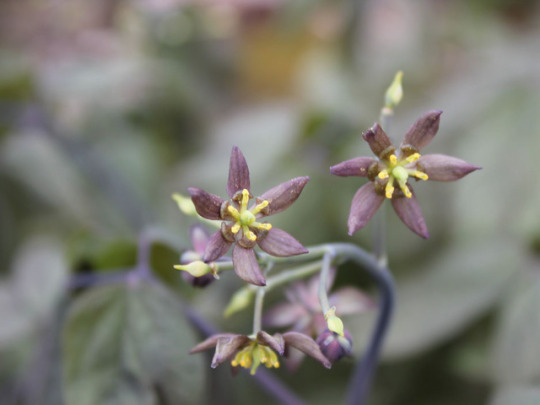

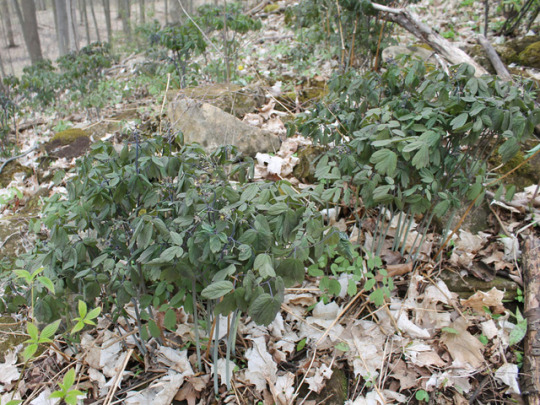
Giant Blue Cohosh
Giant Blue Cohosh is a species of flowering plant in the barberry family. It is native primarily to northeastern North America, where it is found in moist rich forests. Giant Blue Cohosh is known for its large triple-compound leaf, and large blue, berry-like fruits. Unlike many spring wildflowers, it is not an ephemeral plant and persists throughout much of the summer. Caulophyllum Giganteum ranges from Ontario and Quebec east to Vermont and south through Tennessee and North Carolina and is not particularly common anywhere in its range.
*************************************************************************
Giant Blue Cohosh Article Found -Here-
*************************************************************************
Help support the continued efforts of MIROFOSS to provide advertisement and bias free research by donating to mirofoss or buying some of our photos for your own personal use. All proceeds from photo sales will go towards the MIROFOSS Foundation.
#Giant Blue Cohosh#Cohosh#Flower#Violet#Barberry#Caulophyllum Giganteum#Plant#Science#Nature#Earth#biology#Forest#Bloom#Micro#Macro#MIROFOSS
0 notes
Text
Herbal Viagra for Lasting Longer in Bed
Perhaps no other drug in the entire history of humankind has achieved as much fame (and at the same time, notoriety) as Viagra. Targeted at curing impotency, this drug - developed by the pharmaceutical giant Pfizer - has achieved almost cult status, with sales of over hundreds of thousands of pills everyday around the globe. The success of Viagra itself speaks volumes about how prevalent impotency is among men all over the world.
However, ancient sciences like Ayurveda and Unani have been known and practiced several natural medicines for treating impotence since centuries, and that too with positive results. These therapies are herbal, and most of them have been proven for their efficacies in the western world too.
But before going into details of the natural treatment options available for impotence, let us see what the real Viagra does. Viagra is the trade name for the drug sildenafil citrate. When it is consumed, it helps the blood flow to focus better on the corpus cavernosa of the penis. The corpus cavernosa is composed of several spongy tissues. When these spongy tissues are engorged with blood, the penis becomes hard, which is the state of erection. Thus, Viagra brings about a temporary erection by filling the corpus cavernosa with blood.
There are some disadvantages when a person consumes Viagra. One of the most important ones is that Viagra needs to be continuously used to obtain an erection. No Viagra, no erection. And those who use Viagra know how expensive the little blue pill is! Health-wise, Viagra can produce explained common colds, headaches and dyspepsia. Sometimes, Viagra can produce embarrassing prolonged erections. Prolonged use of Viagra can cause loss of peripheral vision and also total blindness. There have also been cases known of men suffering from heart attacks when having sexual intercourse under the effect of Viagra. Hence, the medical fraternity has always maintained that Viagra is a potentially harmful drug.
This has led both medical experts as well as users to keep seeking for alternatives to Viagra. This has made the herbal supplements ever more popular. The sudden interest of the western world in the Ayurvedic herbs and supplements for the treatment of impotence is due to the success of the Viagra. Before that most men were learning to cope up with their conditions of impotence.
However, now that we know that several herbal supplements exist for the treatment of Viagra, let us see how they affect the male penis. All these are carefully made preparations by mixing just the right amounts of several herbs and then carrying out several intricate processes for blending them. Since the name Viagra has become so common, these preparations are called as herbal Viagras in slang, though they have nothing to do with Viagra. Viagra is a chemical drug, herbal Viagras are made of herbal constituents.
But just like the original Viagra, the herbal Viagras work in two ways:
(i) they improve the circulation of blood to the penis and (ii) they alter the hormones so that the male has better libido.
Herbal supplements are used for the treatment of not just impotence, but several other male sexual problems such as weak libidos, penis curves, penis enlargement, premature ejaculation, etc.
The important herbal constituents used in herbal Viagras are Panax ginseng (Indian Ginseng), Rosemarinus officinalis (Rosemary), Avena sativa (Oats), Muira puama (Potency Wood), Lepidium meyenii (Maca), Ginkgo biloba (Ginkgo), Tribulus terrestris (Caltrop) along with scores of other herbs. The first thing that these herbs do is to improve the circulation of blood in the region of the penis, which causes harder and more permanent erections. One more important function is to improve the male sexual hormone, testosterone, which helps in increasing the male libido and also to make the man perform the sexual act better. Some of these herbs can have antidepressant properties, which are very much beneficial in the treatment of men who are suffering from problems pertaining to weak erections.
In the Indian Ayurvedic tradition, there is a whole list of more herbs which are used in the preparation of herbal Viagras. These are different from the above herbs, in the sense that they are used almost exclusively for the treatment of impotence. Some of these herbs are the dong quai, kava, blessed thistle, black cohosh, golden seal, etc. These are the same herbs that are used in the enhancement of breasts in females.
In recent times, a particular substance called as yohimbine has gained a lot of popularity in the treatment of male sexual problems. Yohimbine is extracted in its hydrochloride form from the tree Pausinystalia yohimbe, indigenous to West Africa. Yohimbine hydrochloride has been proved to generate better and more sustained erections in men. It is being widely used nowadays in alternatives to Viagra. Some Ayurvedic supplements are using yohimbine in their preparations.
Herbal Viagras are made by carefully mixing specific herbs like those mentioned above in the proper proportion. They might be mixed in some oils, or burnt into ash, or molten into a semi-liquid semi-solid kind of preparation, or prepared in some other way. The basic intention is to make the best use of the chemicals present in the herbs. The herbal Viagras are generally to be taken with milk.
Since the herbal Viagras contain more than one herb in them, one major plus point becomes that a single preparation can be used to treat several male sexual problems at once. Also, since they are made of natural herbs, they do not have major side effects like the real Viagra does.
But some precautions need to be taken. First and foremost, if you are suffering from hypotension, you need to ask an Ayurvedic doctor whether you can have the herbal Viagra. Some people claim that since herbal Viagras alter the hormonal balance of the body, they are potentially harmful. This is true indeed if the herbal Viagras are taken for a long time. There may be interference with other hormone-driven activities of the body. Some components of the herbal Viagras can also cause depression, dyspepsia, headaches, common colds, etc. when used separately. However, whether they can cause the same effects in their mixture form or not is yet to be studied properly.
0 notes
Photo


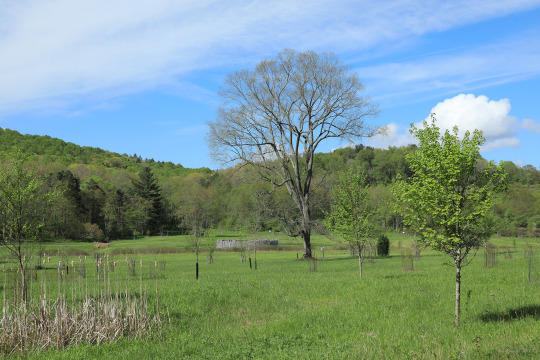

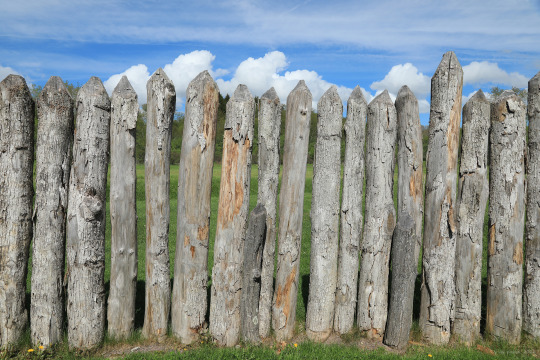



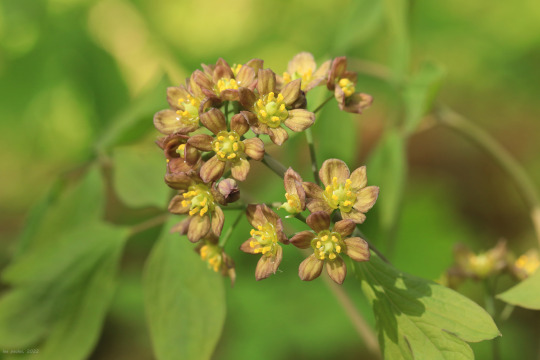

Icons of the National Road, Part 5. Fort Necessity National Battlefield commemorates the site of one of the earliest battles of the French and Indian War. Shortly after ambushing a French expedition led by Joseph Coulon de Villiers, Sieur de Jumonville at a nearby mountain glen, Colonel George Washington ordered his Colonial militia to construct a “fort” - little more than a stockade surrounded by breastworks - at Great Meadows in anticipation of an attack by the French. Sure enough, on July 3, 1754, Jumonville’s older brother, Louis Coulon de Villiers, led a French and Native American force in an assault on the fort, which was defended by the Colonial militia and small number of British regulars under Washington's command. After a day-long battle in the rain, Washington was compelled to surrender and sign a confession admitting to Jumonville’s assassination. It was the first and last time in his career he would surrender to the enemy.
In addition to a reconstruction of the fort and its earthworks, the park includes a visitor center with a museum, the Mount Washington Tavern, General Edward Braddock’s gravesite, and Jumonville Glen.
#appalachia#vandalia#pennsylvania#the national road#us route 40#laurel highlands#allegheny mountains#human history#historical sites#battlefield#fort necessity national battlefield#french and indian war#george washington#mount washington tavern#caulophyllum giganteum#giant blue cohosh#houstonia caerulea#azure bluets
12 notes
·
View notes
Photo
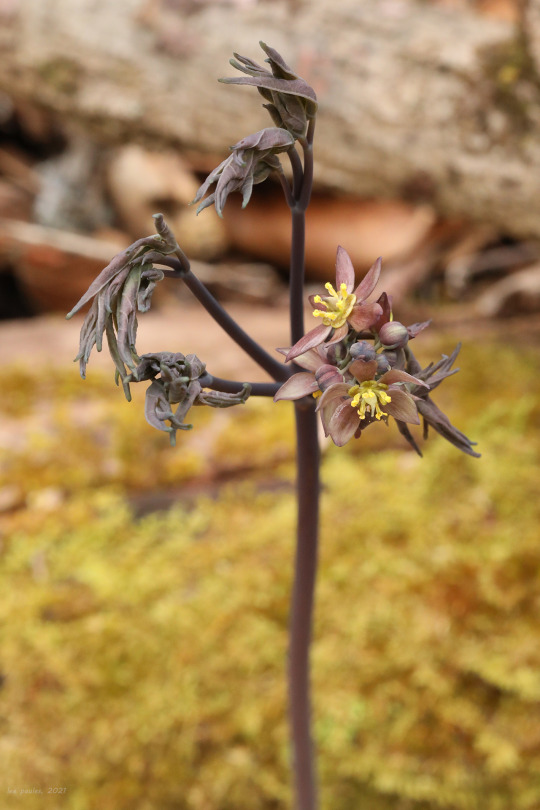
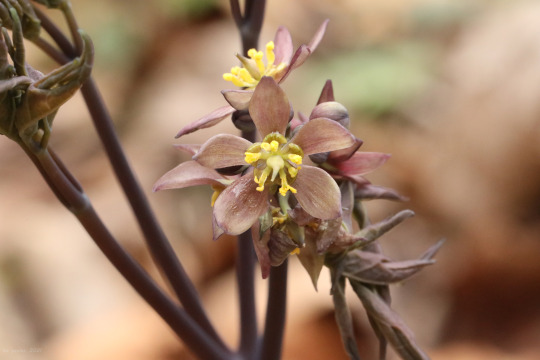

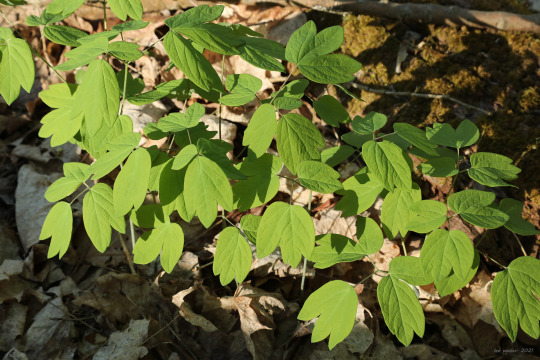
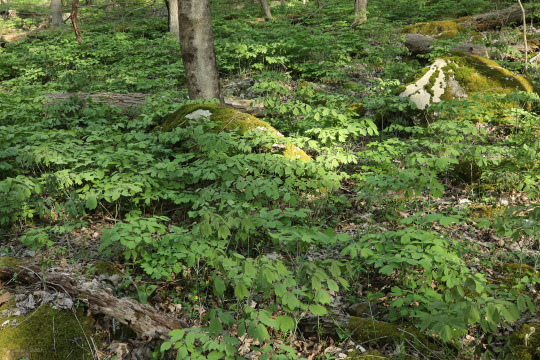
Giant blue cohosh (Caulophyllum giganteum) arguably makes the most dramatically-balletic entrance of all of Appalachia’s spring-blooming perennials. The plant’s delicate maroon shoots emerge en masse from the drab leaf litter in early April and soon produce the most extraordinary, parasol-like flowers, each with six enlarged sepals, six smaller petals, and six large, yellow stamens surrounding a bulbous pistil. The flowers are later replaced by clusters of smoky blue berries. As this shade-loving member of the barberry (Berberidaceae) family matures, its stems and foliage turn to a soft, reflective shade of green and take on a shrubby appearance. The plant’s thrice-compound, three-lobed leaves are reminiscent of those of meadow rue but the two plants are not closely related. Giant blue cohosh, also known as early blue cohosh, blooms earlier than the more familiar blue cohosh (Caulophyllum thalictroides), which has yellow-green flowers. Photos above were taken at Coopers Rock State Forest and Elizabeth’s Woods at Toms Run Preserve.
#appalachia#vandalia#west virginia#spring#flora#perennial#wildflowers#caulophyllum#blue cohosh#giant blue cohosh#early blue cohosh#coopers rock state forest#toms run preserve#elizabeth's woods
38 notes
·
View notes
Photo

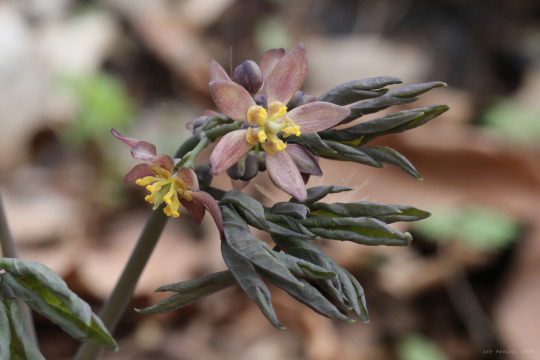
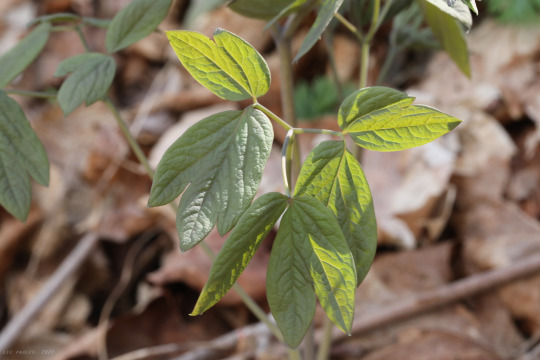

. . . the even more stunning and languorous giant blue cohosh (Caulophyllum giganteum), one of the earliest blooming wildflowers in Appalachia’s woods. This species is primarily distinguished from thalictroides by its reddish-purple, rather than green or yellow, flowers, a fewer number of flowers overall, and larger sub-leaflets. The mature leaves of both species are roughly the same size, however. Although the seeds of their berries were once used as a coffee substitute, the berries, leaves, and roots of both species of Caulophyllum are mildly toxic if ingested. The photos above were taken on the Mon River Trail this morning.
#appalachia#vandalia#west virginia#flora#wildflowers#spring#perennial#caulophyllum#giant blue cohosh#berberidaceae#mon river trail
73 notes
·
View notes
Photo
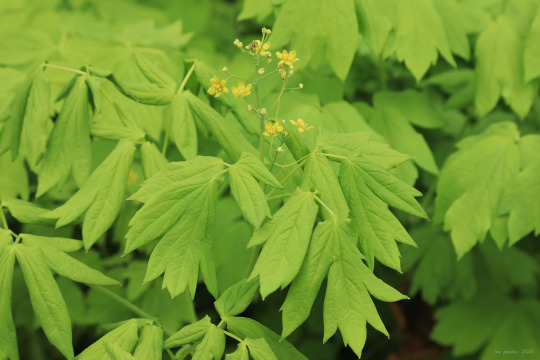


Blue cohosh (Caulophyllum thalictroides) is very similar in appearance to giant blue cohosh, but its flowers are yellow-green and smaller than those of its close relative. The plant’s three-lobed leaves are also more sharply serrated at the tips than those of giant blue cohosh. This beautiful, lush perennial of Appalachia’s damp, rich woods has figured prominently in the history of herbal medicine in North America, long being used by Native Americans and traditional medicine practitioners to treat everything from hiccups and constipation to female reproductive problems. However, the plant has toxic properties and is better admired for its aesthetic, rather than medicinal, qualities. The photos above were taken earlier today at the Friendship Hill National Historic Site, part of the National Park system.
#appalachia#vandalia#pennsylvania#friendship hill national historic site#spring#flora#wildflowers#perennial#caulophyllum#blue cohosh
42 notes
·
View notes
Photo


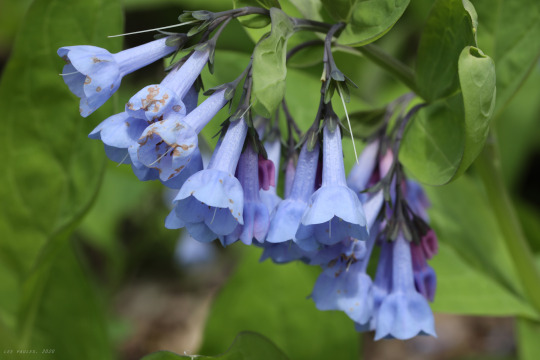





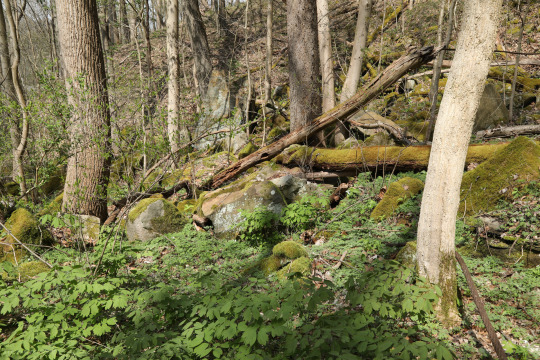
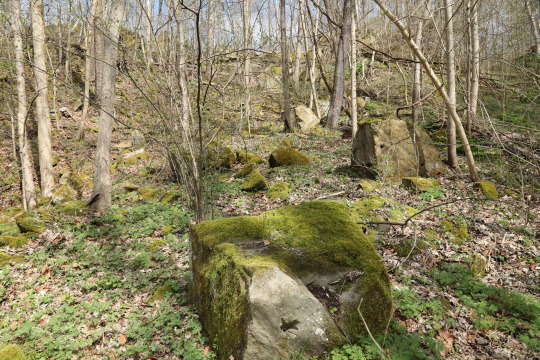
The stretch of the Mon River Trail along the Opekiska Lock and Dam offers a gentle but compelling reflection on the area’s human and natural histories. The relics of a rough-and-tumble industrial past, discarded by man in the aftermath of declining fortunes, have been patiently and lovingly reclaimed by nature. In one spot, an old quarry has been transformed into an idyllic rock garden, overrun by moss, a myriad of spring ephemerals, and giant blue cohosh (bottom two photos). The spring woods along the trail are bursting with wildflowers this time of year. A small sampling from this afternoon (top to bottom): Canada violet (Viola canadensis), the most beautiful of all the spring violets in this area; wild blue phlox (Phlox divaricata); Virginia bluebells (Mertensia virginica), near the end of peak bloom; dwarf larkspur (Delphinium tricorne); and wild geranium (Geranium maculatum).
#appalachia#vandalia#west virginia#spring#flora#wildflowers#mon river trail#opekiska lock and dam#natural history#human history#canada violet#viola#wild blue phlox#phlox#virginia bluebells#mertensia#dwarf larkspur#delphinium#wild geranium#geranium
164 notes
·
View notes


